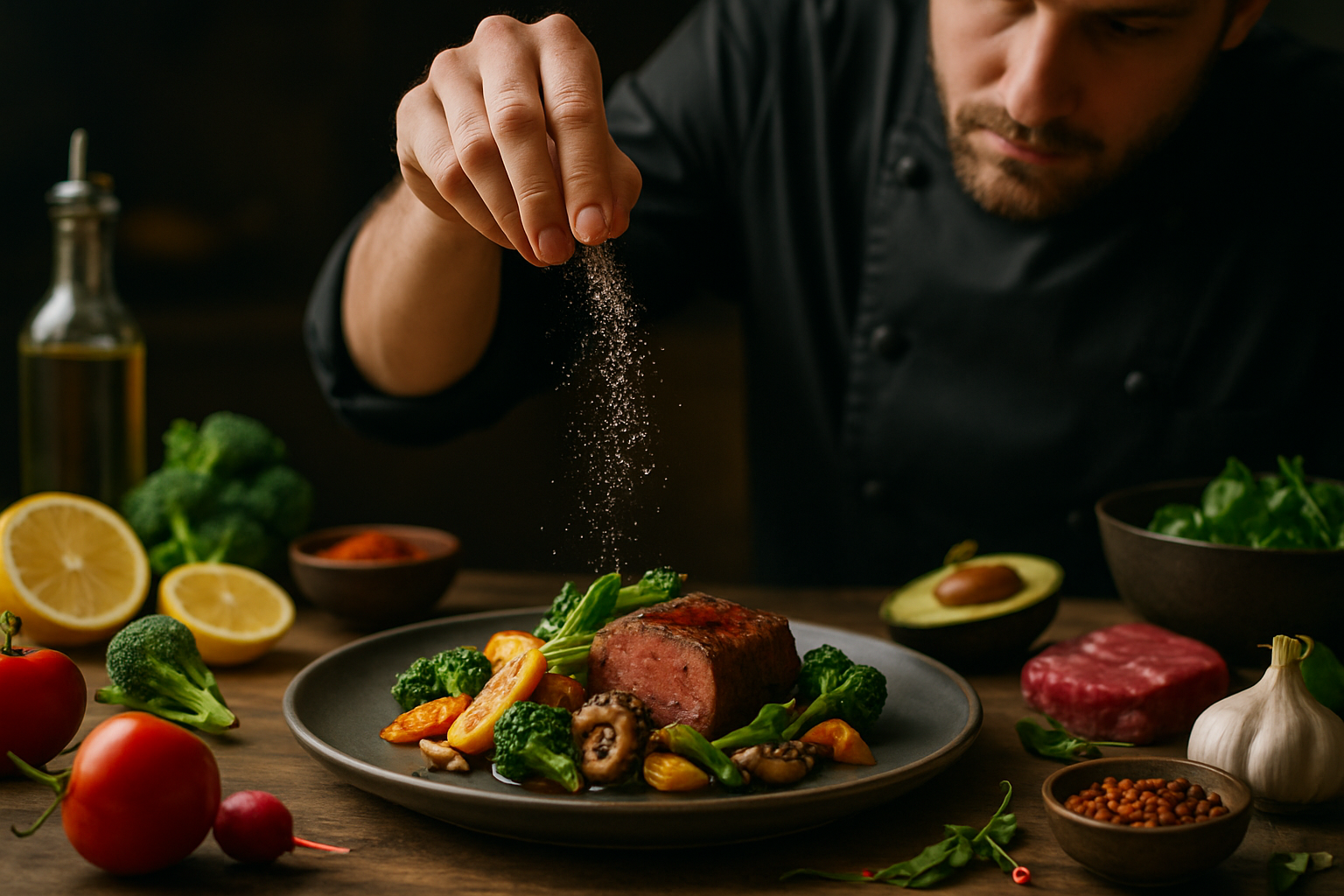Culinary Alchemy: Transforming Humble Ingredients into Gourmet Delights
Unlock the secrets of culinary transformation as we explore the art of elevating everyday ingredients into extraordinary dishes. From simple pantry staples to overlooked produce, discover how innovative techniques and creative pairings can turn the ordinary into the extraordinary. Get ready to embark on a flavorful journey that will revolutionize your approach to cooking and dining.

Texture Alchemy: Transforming Ingredients Through Technique
The way we prepare ingredients can dramatically alter their texture and perception. Consider the humble carrot – when raw, it’s crunchy and sweet, but when roasted, it becomes caramelized and tender. Take this concept further by experimenting with different cooking methods. Try pickling thinly sliced vegetables for a tangy crunch, or use a blowtorch to char the exterior of fruits for a smoky-sweet flavor profile. Another technique to explore is dehydration – transform herbs into flavorful powders or create fruit leather for a chewy, concentrated treat. By mastering these texture-altering techniques, you’ll be able to present familiar ingredients in exciting new ways, surprising and delighting your dinner guests.
The Art of Unexpected Pairings
One of the most exciting aspects of culinary alchemy is the art of unexpected pairings. Challenge your taste buds by combining flavors and ingredients that seemingly don’t belong together. For instance, try sprinkling sea salt on watermelon to enhance its sweetness, or drizzle olive oil over vanilla ice cream for a luxurious twist. Experiment with contrasting temperatures, like serving a chilled gazpacho with warm, crispy croutons. Don’t be afraid to mix sweet and savory elements – a pinch of chili powder in chocolate desserts can add depth and intrigue. By breaking traditional flavor boundaries, you’ll create memorable dishes that showcase your culinary creativity and push the boundaries of taste.
Elevating Presentation: The Visual Transformation
The visual appeal of a dish can significantly impact its perceived value and taste. Learn to elevate your presentation skills to transform simple ingredients into stunning culinary creations. Start by investing in a variety of serving vessels – think slate plates, wooden boards, or even repurposed items like mason jars. Use negative space on the plate to create a focal point and draw attention to key elements. Experiment with color contrasts, such as pairing vibrant vegetables with neutral-colored proteins. Incorporate edible flowers or microgreens as garnishes to add a touch of elegance. Remember, presentation is not just about aesthetics – it’s about creating a multi-sensory experience that enhances the overall enjoyment of the meal.
Infusion and Extraction: Unlocking Hidden Flavors
Harness the power of infusion and extraction techniques to create unique flavor profiles and elevate simple ingredients. Start by infusing oils with herbs, spices, or even citrus zest to create flavorful bases for dressings and marinades. Experiment with cold brew techniques beyond coffee – try cold-brewing tea leaves or even herbs for concentrated, smooth flavors. Create flavored salts by blending sea salt with dried herbs or spices in a food processor. For a sweet twist, infuse sugar with vanilla beans or lavender for use in baking or as a garnish. These infusion and extraction methods allow you to layer flavors and create depth in your dishes, turning basic ingredients into complex culinary experiences.
Culinary Alchemy Tips & Facts
• Use a kitchen torch to quickly char vegetables for a smoky flavor without turning on the oven.
• Freeze fresh herbs in olive oil ice cubes for easy flavor boosters in soups and sauces.
• Experiment with different types of salt, like smoked or infused varieties, to add complexity to dishes.
• Try fermenting vegetables at home for probiotic-rich, tangy additions to meals.
• Use a sous vide machine to perfectly cook proteins and infuse them with flavors simultaneously.
• Incorporate molecular gastronomy techniques like spherification to create burst-in-your-mouth flavor bombs.
• Explore the world of edible flowers to add visual appeal and unique flavors to your dishes.
As we conclude our journey into culinary alchemy, remember that the true magic lies in your creativity and willingness to experiment. By mastering these techniques and embracing unexpected combinations, you’ll be able to transform even the most humble ingredients into gourmet masterpieces. Let your imagination run wild in the kitchen, and don’t be afraid to push the boundaries of traditional cooking. With practice and passion, you’ll soon be creating dishes that not only nourish the body but also excite the senses and spark joy in those who share your table. Happy cooking, and may your culinary adventures be filled with delicious discoveries!





